University of Utah – Ambulatory Care Complex Hospital Expansion
FFKR Architects and HDR collaborated to design the Ambulatory Care Complex Hospital Expansion at the University of Utah located in Salt Lake City, Utah.
The 296,000 gsf University Hospital Expansion—known as the Ambulatory Care Complex—is the first of three new buildings. The program was driven by the need to replace all of the outpatient clinical functions and materials management functions of the building being demolished, while expanding the surgical space, and adding 108 inpatient beds.
The Hospital expansion impacts the majority of the service lines in University Hospital, including a complete reconstruction of materials management, however there were no convenient opportunities for connectivity or adjacency. Solving patient flow and operational issues was a major challenge of the design, and was successfully resolved through a close and creative collaboration between FFKR and University Health.
A universal design was developed for all of the 86,000 sf of outpatient clinical space, with minor customizations to accommodate the special needs of Dental, ENT, Dermatology, Urology, Surgery, Thrombosis, Infusion, Internal Medicine, Ob/Gyn, and Maternal Fetal Medicine. Clinical planning utilized a “center stage” concept to accommodate the large teams of care providers required for the complex cases that are common at University Hospital.
The project utilized a center stage or on/on stage configuration in all 86,000 s.f. of clinical space, placing the staffing area central in the module between corridors that are shared between patients and staff. While the University utilizes on/off stage and on/on stage clinical planning methods at various facilities, the decision was made early in planning to use the on/on stage configuration as it requires less square footage and more efficiently uses
the space.Universal design was utilized to allow various clinics to flex into adjacent spaces during busy times with the intent to build less space by making better use of the space that is built. Each clinic module began with the same typical clinic layout and adjusted within a certain framework to accommodate different clinical specialties. The exam rooms also began as universal rooms and modifications were made only when needed to adjust for the different user groups.
Connections to the existing hospital were critical and the University recognized that the existing entrance to the hospital needed to remain the “front door” of the building. Other connections were planned to connect certain services such as OB/GYN with labor and delivery and non-patient corridors to accommodate the flow of materials and supplies entirely through back of house areas.
Design: FFKR Architects and HDR
Photography: Paul Richer


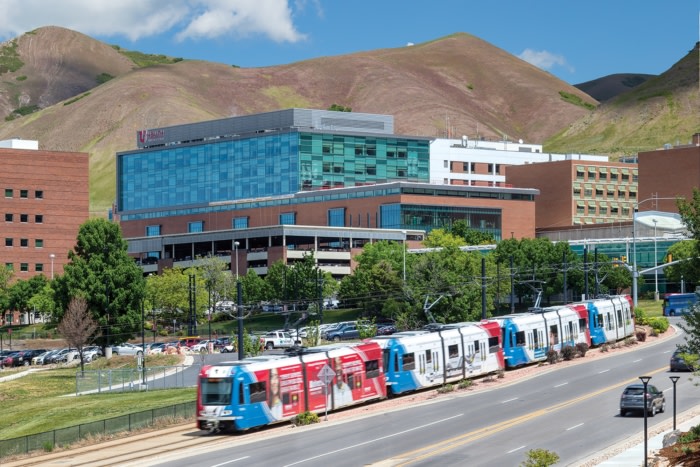
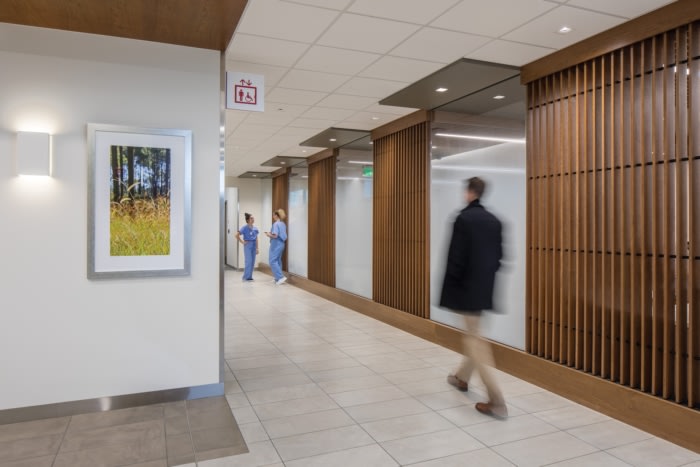
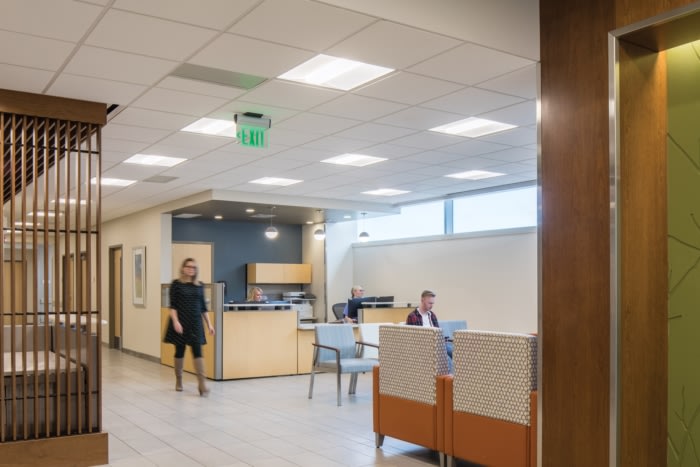
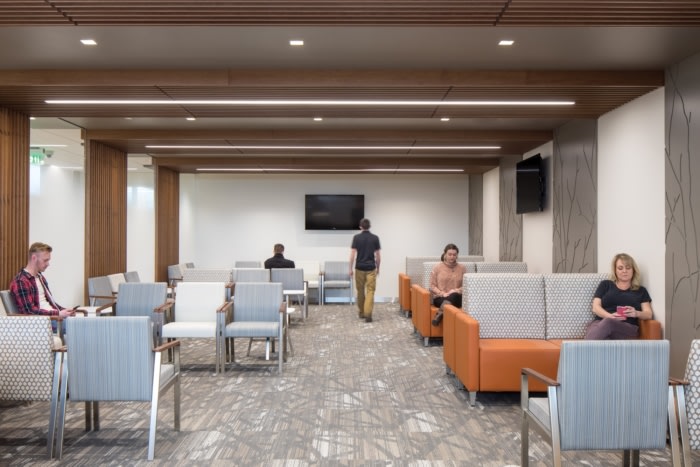
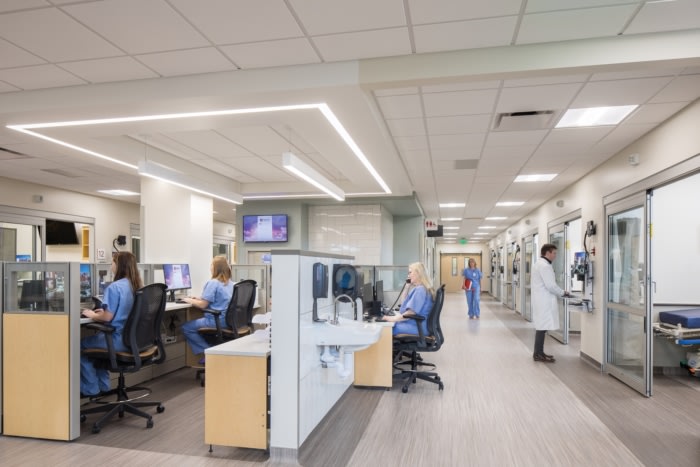
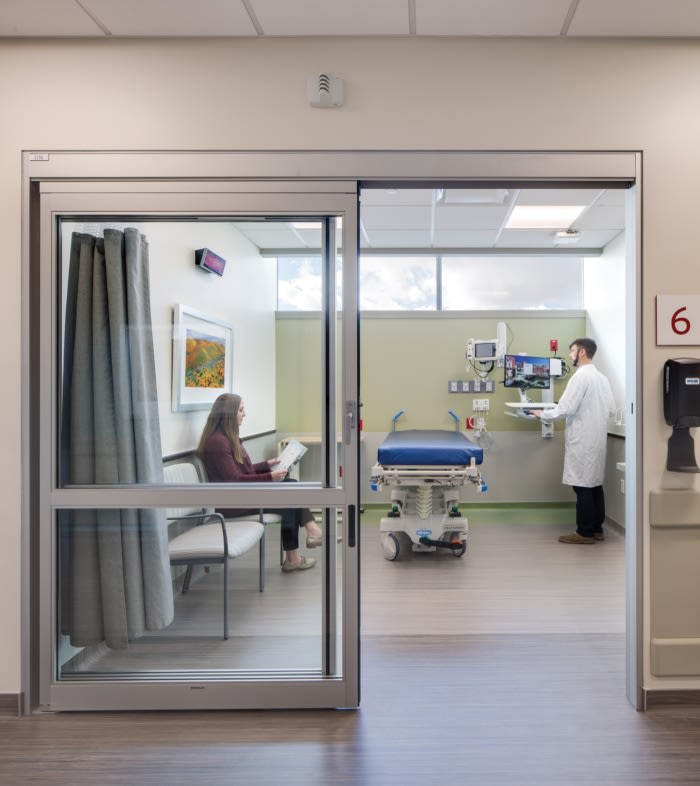
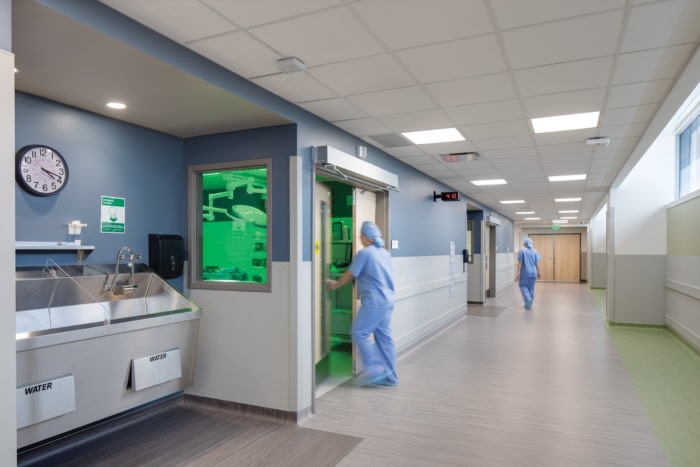

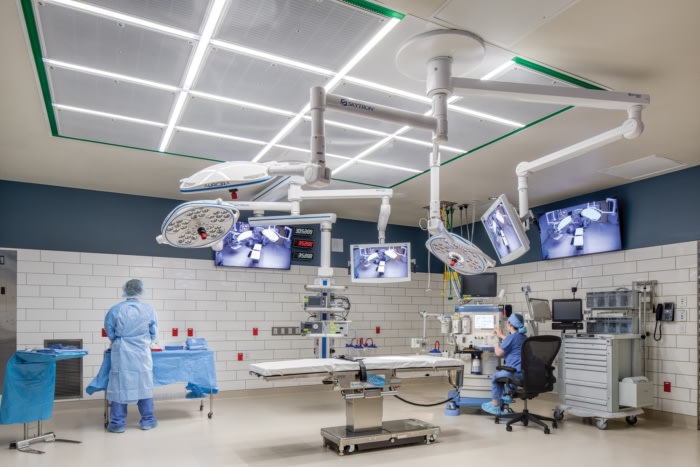
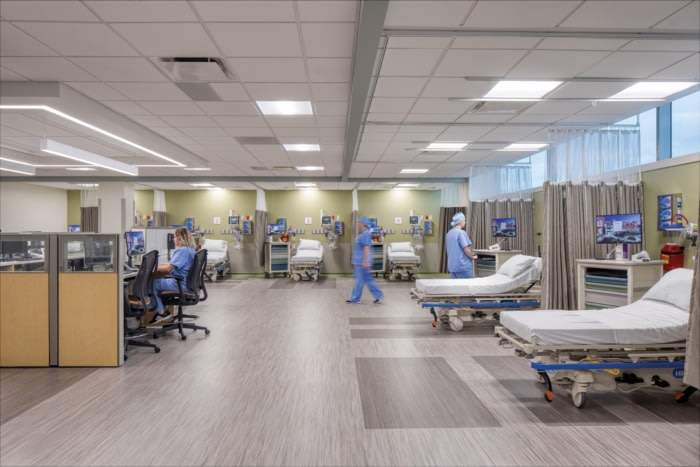
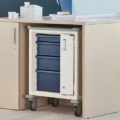














Now editing content for LinkedIn.